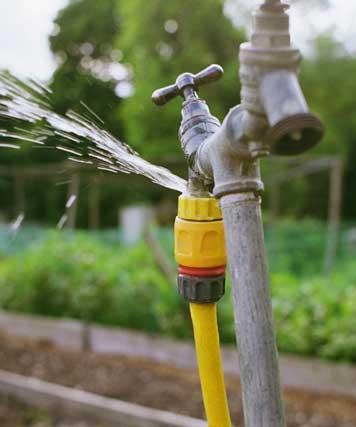Overview To Water Leakage Discovery In The House
Overview To Water Leakage Discovery In The House
Blog Article
What're your thoughts and feelings on Detecting hidden plumbing leaks?

Early discovery of dripping water lines can reduce a potential calamity. Some small water leaks may not be noticeable.
1. Check Out the Water Meter
Every house has a water meter. Checking it is a surefire manner in which aids you discover leaks. For beginners, switch off all the water sources. Guarantee no person will purge, utilize the tap, shower, run the cleaning equipment or dish washer. From there, most likely to the meter and also watch if it will change. Because no one is utilizing it, there must be no motions. If it moves, that shows a fast-moving leakage. Also, if you find no changes, wait an hour or 2 as well as examine back again. This indicates you may have a sluggish leakage that might even be underground.
2. Inspect Water Intake
Evaluate your water costs and also track your water consumption. As the one paying it, you need to observe if there are any type of discrepancies. If you spot sudden changes, regardless of your intake coinciding, it means that you have leaks in your plumbing system. Bear in mind, your water expense ought to drop under the same array monthly. An abrupt spike in your bill suggests a fast-moving leak.
A constant rise every month, even with the exact same practices, shows you have a sluggish leakage that's likewise gradually rising. Call a plumber to extensively examine your residential property, especially if you really feel a cozy location on your flooring with piping underneath.
3. Do a Food Coloring Examination
When it comes to water intake, 30% comes from bathrooms. If the color somehow infiltrates your bowl throughout that time without flushing, there's a leak between the storage tank and also bowl.
4. Asses Outside Lines
Don't neglect to examine your outdoor water lines too. Test faucets by connecting a yard hose pipe. Needs to water permeate out of the link, you have a loosened rubber gasket. Change this as well as make sure all links are tight. If you have actually got a lawn sprinkler, it will help get it properly checked out as well as kept every year. One small leak can squander lots of water as well as increase your water expense.
5. Examine the circumstance and inspect
Property owners ought to make it a behavior to inspect under the sink counters and also even inside cabinets for any type of bad odor or mold development. These two warnings show a leakage so timely focus is called for. Doing routine assessments, even bi-annually, can conserve you from a major trouble.
Check for stainings and also weakening as many appliances and also pipes have a life span. If you suspect leaking water lines in your plumbing system, don't wait for it to intensify.
Early discovery of dripping water lines can alleviate a prospective calamity. Some little water leaks might not be noticeable. Examining it is a guaranteed way that helps you uncover leaks. One tiny leakage can squander heaps of water and also increase your water bill.
If you presume dripping water lines in your plumbing system, don't wait for it to escalate.
WARNING SIGNS OF WATER LEAKAGE BEHIND THE WALL
PERSISTENT MUSTY ODORS
As water slowly drips from a leaky pipe inside the wall, flooring and sheetrock stay damp and develop an odor similar to wet cardboard. It generates a musty smell that can help you find hidden leaks.
MOLD IN UNUSUAL AREAS
Mold usually grows in wet areas like kitchens, baths and laundry rooms. If you spot the stuff on walls or baseboards in other rooms of the house, it’s a good indicator of undetected water leaks.
STAINS THAT GROW
When mold thrives around a leaky pipe, it sometimes takes hold on the inside surface of the affected wall. A growing stain on otherwise clean sheetrock is often your sign of a hidden plumbing problem.
PEELING OR BUBBLING WALLPAPER / PAINT
This clue is easy to miss in rooms that don’t get much use. When you see wallpaper separating along seams or paint bubbling or flaking off the wall, blame sheetrock that stays wet because of an undetected leak.
BUCKLED CEILINGS AND STAINED FLOORS
If ceilings or floors in bathrooms, kitchens or laundry areas develop structural problems, don’t rule out constant damp inside the walls. Wet sheetrock can affect adjacent framing, flooring and ceilings.
https://www.servicemasterbyzaba.com/blog/how-to-detect-water-leakage-in-walls/

I am very enthusiastic about Hacks to detect leaks and I really hope you enjoyed our entry. Loved our blog? Please share it. Let somebody else find it. Many thanks for taking the time to read it.
Report this page